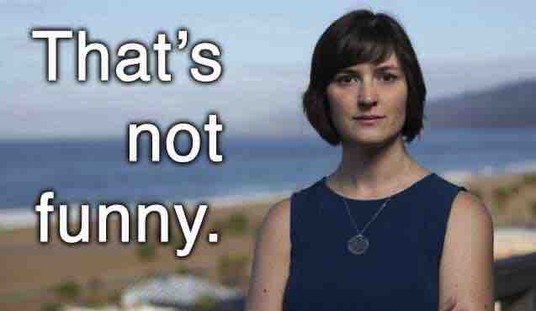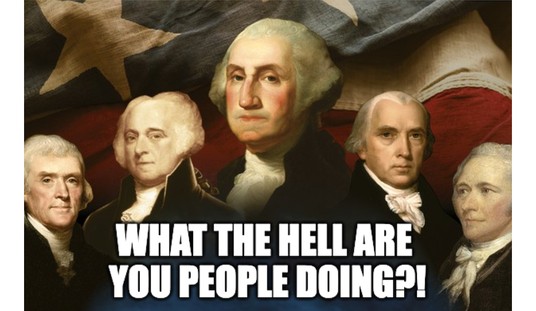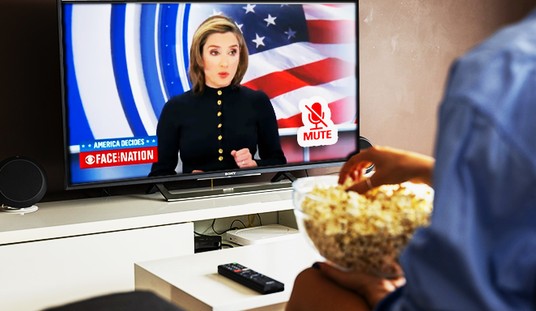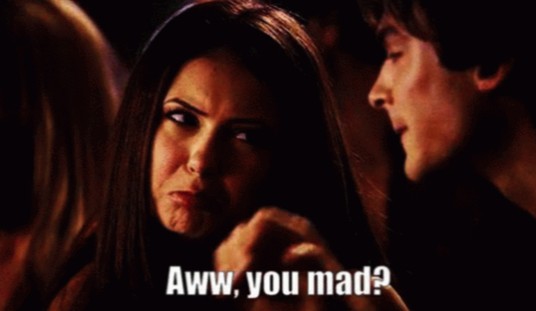It’s funny that I mentioned Sarah Palin the other day for lighting up human pimple Rick Wilson over his sudden concern over attacks on families, and now she is in the news again. The short version is that Sarah Palin lost a defamation case against the New York Times, and the Second Circuit just brought that case back from the dead. Sarah Palin is going to get a new trial.
So the purpose of this piece is to take a few minutes to talk about the Second Circuit decision and explain some of the ins and outs because I happen to think it is interesting, and hopefully you will, too. And while I am definitely interested in the legal end of this, I also find this case equally fascinating as a look behind the curtain at how the New York Times operates—how they can publish something that any diligent person would know isn’t true? So, this is as much a deep dive into what the heck was going on at the New York Times as it is on the law.
So, let’s go over the background, because it seems our prior coverage is a little scant.
Previously, the New York Times published an editorial decrying political violence in the wake of an attempted mass shooting at a congressional baseball practice where Rep. Steve Scalise was shot. Because the New York Times bizarrely can’t decry violence by Democrats against Republicans without ‘both siding’ this thing, they threw in references to Sarah Palin’s crosshairs map, alleging that it somehow caused the shooting of Gabby Giffords. Here’s what the Second Circuit wrote about the editorial:
In comparing these two tragedies, the editorial made statements about the Loughner shooting that are the subject of this defamation action. It stated that there was a ‘clear’ and ‘direct’ ‘link’ between the Loughner shooting and the ‘political incitement’ that arose from a digital graphic published in March 2010 by former Alaska governor and vice-presidential candidate Sarah Palin’s political action committee. … The graphic was a map that superimposed crosshairs over twenty congressional districts represented by Democrats—including Giffords’ district. … In fact, a relationship between the crosshairs map and the Loughner shooting was never established; rather, at the time of the editorial, the attack was widely viewed as a tragic result of Loughner’s serious mental illness.
Because of the posture of this case, the judge writing the opinion is careful to say that this this is based on a reading of the evidence most in Sarah Palin’s favor, but regular readers know that pretty much everything being said in that passage is true. Indeed, I used the Internet Archive Wayback Machine and retrieved a copy of the editorial before they corrected it. Here are the apparently offending passages:
Was this attack [on Republicans] evidence of how vicious American politics has become? Probably. In 2011, when Jared Lee Loughner opened fire in a supermarket parking lot, grievously wounding Representative Gabby Giffords and killing six people, including a 9-year-old girl, the link to political incitement was clear. Before the shooting, Sarah Palin’s political action committee circulated a map of targeted electoral districts that put Ms. Giffords and 19 other Democrats under stylized cross hairs.
Conservatives and right-wing media were quick on Wednesday to demand forceful condemnation of hate speech and crimes by anti-Trump liberals. They’re right. Though there’s no sign of incitement as direct as in the Giffords attack, liberals should of course hold themselves to the same standard of decency that they ask of the right.
(Emphasis added.) Apparently, that decency didn’t include telling the truth.
I added boldface so you could see where Judge Walker is getting the language in his opinion from.
And that’s probably as good a time as any to say that this Judge John M. Walker is not related to me, Aaron Walker. Frankly, ‘Walker’ is like the ‘Jones’ or ‘Smith’ of Scottish people (I am about one quarter Scottish except when I watch Braveheart. It’s an extremely common family among Scottish people.
[Ed: Maybe you should insert a dirty joke about how your ancestors got around, iykwim, here.]
[Aaron: I would never stoop to such a thing.]
However, Judge Walker was one of my teachers in law school, serving as a secondary instructor with fellow Second Circuit Judge Guido Calabresi in a class discussing judicial philosophy. And he is first cousin to President George Herbert Walker Bush (the first President Bush). And he became a Second Circuit Judge under ‘Bush Sr.’s’ presidency. Judge Calabresi actually had a brilliant defense of against any charges of nepotism: He argued that Bush Sr. would not dare to appoint him unless his qualifications were beyond reproach.
In any case, I also really liked Judge Walker as a jurist and a teacher, and I thought he was an excellent addition to the Second Circuit counterbalancing some of the adventurism of the liberal jurists. He had a manner to him that was very down to earth, very hard-nosed, practical and very conservative. He gave off a ‘Joe Friday’ no B.S. vibe in his writings and his arguments and if you do read the opinion, I think that same vibe comes through. Mostly it is no nonsense, except I do suspect there is a subtle message to the judge below I will talk about later.
And if you want to read the opinion, it is provided at the end of this Jonathan Turley piece, linked here:
Palin must now go back before Judge Rakoff and a New York jury, something that has proven a deadly combination. However, if her case ultimately goes to the Supreme Court, it could present a major legal question on the scope of protection for the media. https://t.co/0hs4gUrAoB
— Jonathan Turley (@JonathanTurley) August 29, 2024
So, the New York Times published this editorial. They got pushback afterward and eventually corrected it, but by then Sarah Palin was pissed and so she sued—and I don’t blame her. And for the record, a correction can reduce how much money one might end up owing in a defamation suit, but you can’t technically undo the defamation once it is made.
It wasn’t widely reported, but at first, Judge Rakoff dismissed the case for failure to state a claim. Let me take a moment to unpack that. Like most Federal lawsuits, her case started with what is called a ‘complaint’ which is basically supposed to tell a story that, if proven, would add up to a right to receive relief—in this case, money. The New York Times’ lawyers basically then argued that even if everything Palin alleged was true, she had no legal right to their money as a matter of law.
The key thing to get is that this ordinarily doesn’t involve any actual evidence at this point in time. The time to challenge the evidence will come later. In fact, there is a strong bias in federal courts to leave all determinations of what the evidence shows to the finder of fact—in this case, the jury. That will become important later.
And when you are dealing with a public figure—essentially a public official or a famous person, broadly speaking—there is an extra high hurdle in the law. In that case, the plaintiff not only has to show that the statement was false but that the person making the statement had what we lawyers call ‘constitutional malice,’ namely the person making the statement either 1) knew it was false or 2) had a reckless disregard for its truth or falsity. It’s the same legal standard applied to Johnny Depp in his case against Amber Turd Heard and it is why I admit I was very surprised when he won. It’s a very hard legal standard for a plaintiff like Depp or Palin to win on.
Ironically, it was the Times that convinced the Supreme Court that this was needed under the First Amendment in New York Times Co. v. Sullivan, 376 U.S. 254 (1964). The idea was that there was a danger that public figures could effectively bankrupt people by suing them for defamation, so setting this extra high bar was a way to discourage such litigation.
By the way, Palin’s lawyers attempted to argue that she was not a public figure. I am reluctant to call out bad lawyering from afar, but I think I am justified in this case. First, the Second Circuit said that they had essentially forfeited the argument by not challenging the issue the first time they came before the Second Circuit. Second, even if they could raise this issue, there is no way they would win on this issue. Of course, Sarah Palin is a public figure. She was the governor of Alaska and the Republican nominee for the vice presidency for frak’s sake. She is never not going to be a public figure. Heck, I don’t think I would be writing this article if she wasn’t a public figure. So, her lawyers should not have wasted their time on this issue, especially because we will see in a bit that this led them to neglect a more important issue.
So, Judge Rakoff really wasn’t supposed to be considering evidence at this point in time, but he did something different. Again, from the opinion:
After the motion was fully briefed, the district judge made the unusual decision to hold an evidentiary hearing—with Bennet as the sole witness—to assess whether Palin had sufficiently pled ‘actual malice’ (i.e., that Bennet published the challenged statements either knowing they were false or with reckless disregard as to their falsity).
Who is this Bennet guy? That would be James Bennet who was the opinion editor for the New York Times, at the time all this happened and you will see eventually he was responsible for the language that offended Palin being published.
Now, I am actually sympathetic to providing some mechanism to challenge the facts at this early stage of litigation in a serious way. As I said, there is very little room to introduce facts at the motion to dismiss stage. So, imagine if a person filed a complaint alleging that on a certain date you shot a person and now he is suing you for medical bills, pain and suffering and so on.
Now imagine if you have absolute proof that you did no such thing. Like imagine if he actually shot himself and you have video proof of that happening as well as the testimony of twenty nuns saying that it went down just like the video showed. Despite that fact, in a motion to dismiss, you can’t introduce that evidence. So, if the complaint was written competently, then this lying plaintiff can demand discovery, which is where you are required disclose all kinds of information to the other side as long as it bears on the case—including information that might be incredibly private. Also, as you hand over the evidence to help your opponent, you have to wonder the whole time whether your opponent will truly do the same for you. They are required to but there are definitely bad faith actors who will withhold evidence. A police officer has to have some evidence before he or she can search your home, but a private citizen can get this kind of access just by telling a story that might be utterly and transparently untrue.
Even after a motion to dismiss, if there is the slightest evidence that the plaintiff is telling the truth—even if you have video and the aforementioned twenty nuns backing you up—you still go to trial. And, typically, the mere fact that the plaintiff says it is true qualifies as ‘the slightest evidence.’ Thus you have to spend a few days—and often thousands of dollars on a lawyer—just for the jury to laugh it out of court. It’s a great way to use the legal system to harass a person and I have seen it done more than once.
Of course, the courts have some mechanisms to protect people from truly abusive plaintiffs. For one, in my hypothetical, most lawyers would find it impossible to represent a person in that situation once they start to learn the true facts, if only because they fear bar discipline. But people can represent themselves. The courts also have a rule punishing truly frivolous suits, but the courts generally hate to invoke them. So that rule is mainly a paper tiger—especially when the facts are not so ridiculously clear as in my hypothetical. You can find yourself in a Kafkaesque world where you have to spend thousands of dollars defending yourself from a pack of lies that are easily shown to be lies.
So, I have sympathy for the notion that maybe an evidentiary hearing early on is a good idea especially when expression is involved. Too many people are silenced by the mere fear that they will be sued. Indeed, California law actually provides such an evidentiary hearing, but there are two problems in how Judge Rakoff ran that hearing. First, this was not the ordinary practice, giving rise to the suspicion that no other defendant is afforded this courtesy, and, second, he allowed only one witness—one of the defendants. That second point especially makes it wrong and unfair.
Then, based on this strange hearing, the Judge Rakoff dismissed the case and then he was reversed by the Second Circuit. In other words, this ruling yesterday wasn’t the first time he had been reversed in this case.
But that is jumping ahead. After that reversal, Judge Rakoff let the case go to trial. In the case he made several rulings that the Second Circuit also found to be errors, but the worst part occurred during the verdict. You see, every jurisdiction I am aware of provides for the judge to intervene when there just isn’t enough evidence to allow a jury to rule a specific way. It is called different things in different contexts, but in federal courts it is called Judgement as a Matter of Law.
As I said earlier, in jury trial, federal courts prefer for juries to answer questions of fact itself. They don’t want the judge to take the decision away from them. However, the rule says that when ‘the court finds that a reasonable jury would not have a legally sufficient evidentiary basis to find for the party on that issue’ then the court can issue a ruling in one side’s favor on all or part of the issues before the court. As a matter of practice, I have only seen this kind of thing done when there is absolutely no evidence on a crucial element of the case.
Allow me to explain what I mean. Imagine John sues Jane for allegedly hitting his car in a car accident. John shows he was in an accident, shows he was horribly injured and so on, but shows absolutely no evidence that Jane was driving the other car or even owned the other car. Jane testifies that she didn't drive or own the other car. In that case, the Jane or her lawyer can to argue that a jury shouldn’t even be allowed to deliberate on this and the judge is likely to agree, granting Judgment as a Matter of Law, because there isn't a scintilla of evidence to support the claim that Jane caused any of John's injuries.
So, at the end of Palin’s case, the judge sent the jury out to render its verdict. Then, while the jury was deliberating, the judge took up the motion for Judgement as a Matter of Law and granted it. But the judge let the jury finish deliberating anyway, and they found against Palin, too.
And even then, many lawyers called foul on the verdict. The jury was not sequestered (isolated) so many lawyers reasoned that the jury almost certainly heard the news that the judge had dismissed the case anyway, so the judge’s decision—literally that no reasonable jury could find in Palin’s favor—inappropriately influenced the verdict finding against her.
But I found out reading this case, it was even worse than that: Several jurors told the judge afterward that they actually got pop-up notifications (a.k.a. push notifications) on their phones telling them of the judge’s decision.
So, Palin asked for a new trial and was denied and so she had to go back to the Second Circuit. She said that the lower court was wrong to grant the Judgement as a Matter of Law in the first place and by granting the motion, the judge tainted the jury’s deliberations because they learned about it.
And she won on both points—and on some other points that I haven’t mentioned yet. She just about ran the tables.
But before I get into the legal reasoning, let’s talk a little more about the facts if only because it is a fascinating look at how the sausage got made in the New York Times. First off, while it was an unsigned editorial, the initial writer was Elizabeth Williamson, who doesn’t seem to have been a defendant in this case, probably because she didn't write any of the things that got the New York Times sued. It was James Bennet who wanted to constantly go after the right and even Sarah Palin, at one point saying in an email that he wondered …
… if there’s evidence of the kind of inciting hate speech on the left that we, or I at least, have tended to associate with the right (e.g., in the run-up to the Gabby Giffords shooting) we should deal with that.
I am quoting that because I find it absolutely stunning that he apparently really believes the right is more violent. To be fair, this was before the left rioted for almost a year in 2020, but it is still stunning, nonetheless. I honestly would have more respect for him if he knew the left was more violent and was consciously trying to mislead people, rather than him being misled himself. This tells me he is not only serving the Kool-Aid, but he is chugging it, and spraying it all over his naked body.
So, then Williamson did some research on whether or not the right did anything to incite or encourage Jared Loughner to kill many people while attempting to murder Gabby Giffords. Bennet had one of Williamson’s colleagues, Phoebe Lett, help her with some additional research. Lett sent Bennet three article and this is how the court described them:
‘No One Listened to Gabrielle Giffords’ by Frank Rich (Jan. 15, 2011), which stated that ‘[w]e have no idea’ whether Loughner saw the crosshairs map and referred to Loughner as being ‘likely insane, with no coherent ideological agenda,’ while also noting that that ‘does not mean that a climate of antigovernment hysteria ha[d] no effect on [Loughner].’ …
‘Bloodshed and Invective in Arizona’ by the Times’ Editorial Board (Jan. 9, 2011), which noted that Loughner ‘appears to be mentally ill,’ indicated that Loughner does not fall into ‘usual ideological categories,’ and stated that ‘[i]t is facile and mistaken to attribute [the Loughner shooting] directly to Republicans or Tea Party members.’ …
‘As We Mourn’ by the Times’ Editorial Board (Jan. 12, 2011), which quoted then-President Barack Obama’s statement that ‘a simple lack of civility . . . did not’ cause the Loughner shooting and mentioned that Palin accused journalists of ‘committ[ing] a ‘blood libel’ … when they raised questions about overheated rhetoric’ in connection with the Loughner shooting.
(Please note that we are removing all citations from this and every other quoted passage in this piece.)
Bennet got all three of those articles and then forwarded the last two to Williamson. Williamson revised the editorial to something that both-sidesed the issue, but still didn’t make the statements that got the Times sued. But it did contain a technically true claim that …
… before the shooting, Palin’s political action committee had ‘circulated a map of targeted electoral districts that put Ms. Giffords and 19 other Democrats under stylized crosshairs.’
That’s technically true but highly deceptive and might have even triggered a defamation suit against Williamson if the language had been left that way. But here’s the other important thing with that passage. From the ruling:
The word ‘circulated’ in the initial draft was hyperlinked to a January 9, 2011 ABC News article entitled ‘Sarah Palin’s ‘Crosshairs’ Ad Dominates Gabrielle Giffords Debate’ (‘the ABC Article’), which stated that ‘[n]o connection ha[d] been made between [the crosshairs map] and the [Loughner] shooting.’
The process of working on the editorial went on until Bennet basically decided to substantially rewrite the piece, adding the language at the center of this suit, but crucially, the hyperlink remained. From the opinion:
Williamson testified that Bennet ‘rewrote [her] editorial’ and, after receiving a complimentary email from a colleague about the piece, Williamson responded that it ‘was mostly a [Bennet] production’ and that Bennet had been ‘super keen to take it on.’
Basically, he circulated the draft and no one raised any serious concerns about the language related to Palin, although some typos and the like were found. Then it was published:
The editorial was published online on the Times’ website at approximately 9:45 pm on June 14, 2017 and appeared in the Times’ print edition the next morning.
And to his credit, Ross Douthat comes off pretty well in this passage, where the Court quoted from an email he wrote to Bennet within an hour of the online publication:
I feel I would be remiss if I didn’t express my bafflement at the editorial that we just ran on today’s shootings and political violence. There was . . . no evidence that . . . Loughner was incited by Sarah Palin or anyone else, given his extreme mental illness and lack of any tangible connection to th[e] crosshair[s] map . . . . [O]ur editorial seems to essentially reverse the fact pattern as I understand it, making it sound like *Loughner* had the clearer connection to partisan rhetoric, when to the best of my knowledge he had none.
Bennet responded about half an hour later—so this would be close to midnight—that he would ‘look into this tomorrow’ and he also said that his …
... understanding was that in the [Loughner shooting] there was a gun sight superimposed over [Giffords’] district; so far in [the Hodgkinson shooting] we don’t know of any direct threat against any of the congressmen on the field. That’s not to say any of it is ok, obviously, or that the violence in either case was caused by the political rhetoric. But the incitement in this case seems, so far, to be less specific.
And for the record, nothing Palin said was incitement, just as it wasn’t incitement for Biden to say that ‘it’s time to put Trump in a bullseye‘ just before Crooks shot Trump. Seriously, give me a break. In any case, Douthat emailed back the next morning:
[T]he point is that the map had no link, none at at [sic] all, to Giffords’ [attempted] murder. People assumed a link initially – there was a Paul K[rugman] column that was particularly vivid in blaming Republicans – but the investigation debunked it. I think Loughner was instigated by a non-answer she’d given him at a town hall about one of his theories of grammar, or his obsession with lucid dreaming, or something. His act had nothing to do with the political climate, so far as anyone can tell. Whereas the Alexandria shooter seems to have had an explicit political motivation. So saying that Giffords was a case of incitement and this one isn’t reads like we’re downplaying that motive, while strongly implying that Loughner had right-wing motivations that he simply didn't have.
Then the backlash started and the corrections started, too:
After a swift public backlash, the Times revised the challenged statements and issued two corrections. The first correction was published on June 15, along with revisions to the challenged statements. The correction read: ‘An earlier version of this editorial incorrectly stated that a link existed between political incitement and the 2011 shooting of Representative Gabby Giffords. In fact, no such link was established.’ … The second correction, released the next day, clarified that the map had overlaid crosshairs on Democratic congressional districts, not photos of the representatives themselves.
That gets us to probably the most important meat of the opinion, when they discuss whether or not the judge should have decided the issue for the jury. And I think this explanation of when a Judgment of a Matter of Law should be granted is important:
Judgment as a matter of law should be granted only when ‘a party has been fully heard on an issue’ and there is no legally sufficient evidentiary basis for a ‘reasonable jury’ to ‘find for the party on that issue.’ … The court considering a Rule 50 motion ‘may not make credibility determinations or weigh the evidence.’ …
The lower court said that Palin had not presented sufficient evidence of constitutional malice—that is, evidence that either Bennet knew the claims were false or was acting in reckless disregard of the truth or falsity of the claims. The Second Circuit disagreed. Mind you, they aren’t saying Palin proved this kind of malice, just that she gave enough evidence that a jury should have made up its own mind.
And I’m going to get a little more into the weeds to cover the media scandal part of this, too. It is showing the New York Times’ bias in operation. For instance, the Second Circuit reviewed evidence—presented in a light most favorable to Palin as is the rule on this kind of motion—that Bennet did have such malice, starting with his actual testimony:
During cross-examination by the defense, defendant Bennet, who was called as a witness by the plaintiff, stated what could be plausibly viewed as an admission: ‘I didn’t think then and don’t think now that the [crosshairs] map caused Jared Loughner to act.’… But the district court dismissed out of hand the possibility that Bennet’s statement could be viewed as an admission supporting a finding of actual malice. The district court concluded that such an interpretation was ‘not a reasonable reading of Bennet’s answer and . . . would be inconsistent with [his] testimony overall.’ … Crediting Bennet’s explanation that he did not intend to convey in the editorial that the crosshairs map directly caused Loughner to act, the district court interpreted Bennet’s ‘admission’ to be merely a statement that the question of whether the crosshairs map spurred Loughner’s attack never entered his mind.
Besides being evidence that Bennet’s writings were basically a knowing lie, the point they are also making is that the district court judge engaged in an inappropriate weighing of the evidence, when that was the jury's job:
But in deciding a Rule 50 motion, a district court may not credit the movant’s self-serving explanations or adopt possible exculpatory interpretations on his behalf when interpretations to the contrary exist. Furthermore, the district court was plainly incorrect to conclude that Bennet’s testimony cannot ‘reasonabl[y]’ be understood to ‘indicate[] that Bennet did not believe that what he was writing was true.’ … Bennet’s statement—that he ‘didn’t think,’ when revising the editorial, that ‘the [crosshairs] map caused Jared Loughner to act’—can permissibly be read to suggest that Bennet entertained serious doubts as to his assertion that the map and shooting had a ‘clear’ and ‘direct’ ‘link.’
Then we get to that hyperlink issue. As I said before, there was a hyperlink in the piece—that survived until the final draft—that took you to an ABC News article that said there was no link between the shooting and the crosshairs map.
Had Bennet read this article, its contents would at a minimum allow a rational juror to plausibly infer that Bennet recklessly disregarded the truth when he published the challenged statements.
The district court erroneously ignored this potential inference, in part because it credited Bennet’s denial that he had ever clicked the hyperlink and read the article. But a district court may not make credibility determinations when considering a Rule 50 motion and, ‘although the court should review the record as a whole, it must disregard all evidence favorable to the moving party that the jury is not required to believe.’
The opinion goes on to say that Palin doesn’t have to actually prove he read the linked article—she can survive this kind of motion just by a reasonable inference that he did:
A jury could reasonably conclude that Bennet would therefore have been responsible for fact-checking the sentence containing the hyperlink to the ABC Article because, although his revisions to that sentence were minor, his revisions to the preceding sentence—where he added that ‘the link to political incitement was clear’—substantially changed the nature of the sentence that contained the hyperlink. … A jury could also reasonably believe that such factchecking obligations would include clicking on and reading through articles hyperlinked in the edited portions of an editorial draft to ensure the accuracy of any changes.
If I were the judge, I am not sure I could resist the urge to say ‘duh.’
Next, remember how Bennet had gotten copies of prior editorials and passed on two of them to Williamson? Well, the Second Circuit looked at what they said and concluded that these pieces suggested that Bennet had constitutional malice. And they went over evidence that Bennet probably remembered prior work showing that there was no connection.
In addition to that, the judge excluded from the trial entirely several pieces of evidence. Here’s what the court said about that:
First, it ruled that evidence relating to Bennet’s brother, Michael Bennet (including that Bennet’s brother was a Democratic U.S. Senator, that Bennet had campaigned for his brother in 2010 during ‘the same time period when the [crosshairs] map was out,’ and that two of the congressmembers whose districts were targeted on the crosshairs map had endorsed Senator Bennet), was inadmissible because it was irrelevant under Federal Rule of Evidence 402 and unfairly prejudicial under Rule 403.
Second, the district court ruled that certain articles about the Loughner shooting published by The Daily Dish and The Wire (the ‘Excluded Articles’)—entities under the same corporate umbrella as The Atlantic magazine, for which Bennet served as editor-in-chief at the time of the Loughner shooting—would be excluded as irrelevant under Rule 402, subject to reconsideration if Palin could establish additional foundation for the articles’ admission
The Second Circuit held that the first exclusion was wrong because this political connection did suggest bias. As for the second issue, the problem there is that the judge felt that Palin needed to show sufficient evidence that Bennet had seen the articles. But the Second Circuit reasoned that Palin met that burden by Bennet admitting it was his job to keep track of most of the news surrounding big events like the Giffords shooting, and these articles were part of the same ‘corporate family’ as the Atlantic, where he worked at the time—in addition to evidence that Bennet had an excellent memory. The jury was free to decide that it didn’t believe he had read those articles, but the judge shouldn’t substitute his judgement for that of the jury and refuse to let them see the articles.
Moving on, they also address how the district court believed certain evidence was incompatible with the conclusion that Bennet was acting with malice:
In addition to improperly discounting Palin’s evidence, the district court also impermissibly viewed Bennet’s evidence in the light most favorable to him. For example, it deemed ‘incompatible’ with the conclusion that Bennet acted with actual malice (1) Bennet’s compliance with the Times’ standard editing process, (2) his attempted apology to Palin, … and (3) his post-publication exchanges with Ross Douthat and other colleagues.
And while a jury could look at it that way, on this kind of motion, the court was supposed to look at the evidence in a light most favorable to Palin as the non-movant. So, here’s how they think someone looking at it that way might look at each claim:
A rational jury could disbelieve that the Times’ editing process could do much to restrain ‘the boss’ of the editorial team, who had ‘ultimate decision-making authority’ over the editorial. … It could also find that Bennet’s attempted apology, given in response to a reporter’s question, was made for public relations purposes or to decrease the likelihood Palin would sue rather than out of remorse for an inadvertent error. Nor do Bennet’s emails to Douthat foreclose the possibility that Bennet acted with actual malice. They could even support an inference of actual malice, because Bennet’s choice to wait until the next morning to address Douthat’s serious concerns over the editorial could be viewed as an attempt to wait out the controversy.
I think the decision to wait until morning is particularly galling. Yes, it would have been pretty late on the east coast, but they were accusing a woman of in essence being responsible for a massacre. So, drink some coffee and figure out if a correction was warranted tonight, not tomorrow morning.
In any case, based on all of this, the Second Circuit concluded that the court should not have granted Judgment as a Matter of Law.
‘But,’ you might say, ‘the jury found against her anyway, so no harm, no foul!’ That was certainly was the outcome Judge Rakoff and the New York Times were hoping for when Rakoff let the jury render its verdict, anyway. His determination that no jury could find in Palin’s favor would be bolstered considerably if the jury didn’t actually find in her favor. But there is one problem with that …
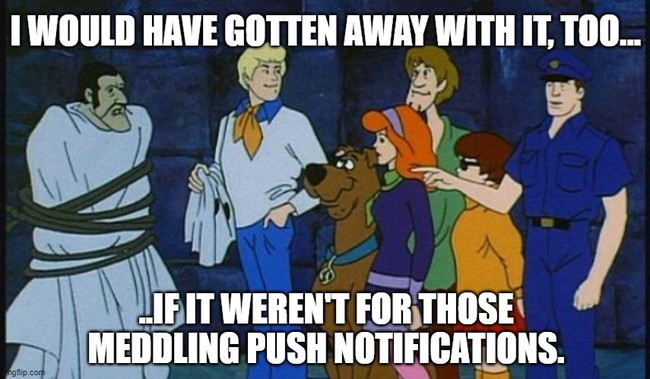 Yes, the problem is those push notification or what I tend to call ‘pop up notifications.’ Literally as the jury was supposed to be deliberating, they got notifications on their phones telling them how Judge Rakoff had ruled.
Yes, the problem is those push notification or what I tend to call ‘pop up notifications.’ Literally as the jury was supposed to be deliberating, they got notifications on their phones telling them how Judge Rakoff had ruled.
Now on this issue, I have to genuinely wonder what her lawyers were thinking because they focused so slightly on it, the Second Circuit said ordinarily they would say Palin had forfeited the issue. Do you remember how I said much earlier in this piece that it was a waste of time to argue that Sarah Palin wasn’t a public figure, and that they literally neglected another issue to focus on it? This is what I mean by that. You only have so many words allowed in your filings. You only have so much time in oral arguments. You have to make sure you cover every important point that you have a chance of winning on and they effectively left this very important point out—mentioning it so slightly that ordinarily the issue would be deemed forfeited. And you can see clearly that they would have plenty of time to deal with that if they didn’t waste their time pretending that a former governor and Republican vice president candidate who is still a household name was not a public figure.
But the court took mercy on them. By then, the Court had decided that Palin definitely deserved a new trial, so they started to take the attitude that they needed to rule on this kind of thing to give guidance to the court below:
We have discretion, however, ‘to decide the merits of a forfeited claim or defense where the issue is purely legal and there is no need for additional fact-finding . . . .’ … Because a new trial is required in any event, we choose to exercise that discretion here to address the push notifications issue[.]
They go on to make the obvious point that you can’t trust a jury’s verdict in this situation. The court was careful to say that the push notifications weren’t caused by the court, but that doesn’t matter, and there wasn’t clear subjective evidence that the jurors were influenced by the notifications. Instead, you go by an objective test:
we have no difficulty concluding that an average jury’s verdict would be affected if several jurors knew that the judge had already ruled for one of the parties on the very claims the jurors were charged with deciding.
Again, I suspect that the court had a hard time resisting the urge to say ‘duh.’ And honestly, it is hard to understand what Judge Rakoff was thinking. Sarah Palin is an obviously famous person. Announcing that he was going to hand the victory to the New York Times even if the jury found in her favor was going to be big news. Did Rakoff not know this? So even without push notifications, it might have been hard to keep the news from reaching the jurors.
And yet there was a simple way to avoid this entire problem! Judge Rakoff didn’t have to announce his ruling immediately and in open court. So, he could have judge made his decision, even written an opinion, and then kept it to himself until after the verdict. Or he could have taken the matter into chambers and disclosed his pending ruling purely to the lawyers and their parties and forbade them from telling anyone else. Both of those actions would have significantly reduced the chances of the news getting out and the jury being effectively tampered with. But Judge Rakoff did none of that and I find it completely mystifying.
In any case, it is probably wise for lawyers and judges to address push notifications in the future, especially in high profile cases, maybe going as far as having a bailiff look at their phones and make sure push notifications are off.
Of course, you might reasonably ask how the Second Circuit determined that a new trial was needed before getting to the push notifications issue. Well, the simple answer is that there were other reasons to grant a new trial. I haven’t talked about them just yet, so let’s do that now.
First, I previously mentioned the exclusion of evidence that Bennet was politically connected and the evidence of prior articles published in the Atlantic’s corporate family. The court not only ruled that this evidence should have prevented the court from granting Judgement as a Matter of Law, but they also ruled that these exclusions tainted the jury verdict. A jury verdict can’t stand if the jury wasn’t allowed to see all of the evidence the parties were allowed to present. Finally, as the jury deliberated, they sent a note back to the judge looking for clarity, and the judge screwed up his response, which also tainted the verdict. We won’t get very deep into it, but it seems that the judge misinterpreted the jury’s question. So, for those reasons, and the push notifications issue, Palin was entitled to a new trial.
And while Palin nearly ran the tables, she didn’t win on every topic. She argued that the judge should have inquired more deeply about potential biases during jury selection and the Second Circuit said the inquiry was adequate. She also argued that Judge Rakoff should be disqualified and that motion failed. I think frankly the Second Circuit got that wrong. Her main argument was (paraphrase) ‘look at all these bad rulings he made against me.’ The Second Circuit said the following …
‘[J]udicial rulings alone almost never constitute a valid basis for a bias or partiality motion.’ … While they may do so where a trial judge displays such a ‘deep-seated and unequivocal antagonism that [it] would render fair judgment impossible,’ Palin provides no such evidence.
Except that this is hard to square with the actual rule of recusal: ‘A judge shall disqualify himself or herself in a proceeding in which the judge’s impartiality might reasonably be questioned.’ So, the standard is not impossibility, but just when a reasonable person might question his or her impartiality and I really question his impartiality at this point. Now, that reasonability standard requires that the reasonable person have knowledge of all relevant facts, so let me make sure you know one other fact. Judge Rakoff didn’t always rule against Palin on every issue. I haven’t talked about where she won on different issues below because I am focusing on her victory in the Second Circuit, but she did win on different issues. Still, he ruled against her a lot, he engaged in strange procedures and he always seemed to bend over backwards to believe every denial Bennet made. Now, judges have a right to have an opinion of the case as the evidence develops, but those opinions seemed to influence his legal rulings that were eventually overturned.
And not for nothing, but this is giving Judge Rakoff a third swing after two strikes. Maybe, unlike in baseball, we should say at the second strike you are out? As in, if a specific judge is reversed in a specific case twice on appeal, then maybe the third time it needs to go to a different judge. Even if there really isn’t any bias here or suspicion of bias, a different judge might be more likely to get to a result that will actually stand up on appeal.
Still, if I was speaking privately to Judge Rakoff, just as a friend, I would tell him he should probably recuse himself. ‘Just step away and get a new set of eyes on it.’
So the case goes back to New York City for a new trial and naturally I will keep any eye on it.
Finally, none of this is a good outcome for the New York Times or Mr. Bennet. Yes, we suspect they probably feel pretty good about their chances of winning over a New York City jury in a case involving one of the more despised women in American politics. (Their hatred is unfair, but it is real.) But they can’t possibly have wanted to spend this much money, bouncing up and down the court system and even now facing the time, embarrassment and expense of a new trial.
Even if they win, it won’t be because they didn’t get the facts wrong. They corrected the editorial, so there really isn’t any question that they got the facts wrong. Their defense is literally, as our own Doug mockingly put it, they made an ‘honest mistake.’ They deserve the mockery, but that is essentially a proper legal defense.
But it’s not a moral defense in this case. Win or lose the legal case, it is a journalistic scandal that they could get the facts so spectacularly wrong and it didn’t have to be that way. The left always goes on about how diversity is their strength, but for the left, diversity means people of different races, ethnicities, disability statuses, religions, sexual orientations, gender identities, socio-economic backgrounds, and so on who all agree on almost everything, all the time. They want a great deal of diversity, except in viewpoints. But if they had some actual conservatives in their newsrooms to at least be a gadfly, these kinds of mistakes would be much less likely to happen.
And no, David French doesn’t count.
RELATED: WATCH: Trump Carpet Bombs Kamala's Twitter/X Account With Videos From Gold Star Families
Elon Musk and Twitter/X Score a Huge Win in Lawsuit Against Media Matters
WATCH as Trump Reveals That He Totally Worked for McDonald's, Too! For Realsies!
Detangling the Truth Over Trump and Abortion and Florida Amendment 4 (A Deep Dive)
Chinese Dissident Ends Tim Walz's Stupid ‘Grammar’ Excuse for Stolen Valor ... in Two Sentences




















